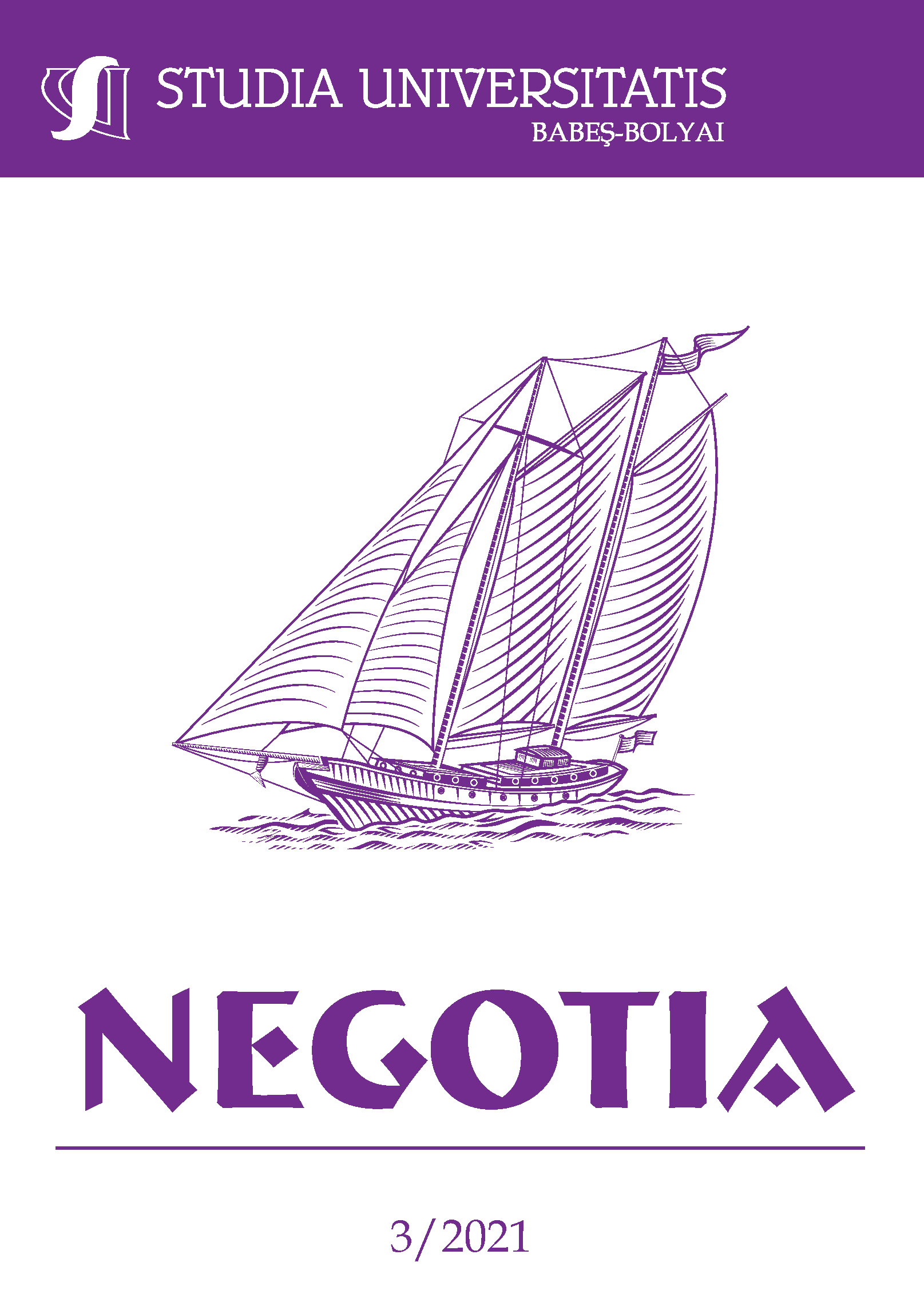PERSPECTIVES AND STRATEGIES OF RELIGIOUS TOURISM FOR A SUSTAINABLE DEVELOPMENT OF THE ECONOMY
DOI:
https://doi.org/10.24193/subbnegotia.2021.3.04Keywords:
religion; religious tourism; development; sustainability; local resources.Abstract
The purpose of this paper is to analyze the importance of religious tourism in sustainable development and to find effective strategies through marketing optics and methodology. The issue of religious tourism is a topical one and not without controversy. Romanian tourism is currently facing many problems, such as: reduced turnover, very frequent changes in the legal framework, very rigid labor market, a deficient infrastructure in quantity and quality, repeated changes in the behavior of economic agents and population, an unfavorable economic environment. To achieve this goal, qualitative research was conducted among tourism producers, intermediaries and tourists in the Neamţ region - one of the most important tourist areas in Romania and also an important region with religious and rural tourism destinations. The results showed that there is a special concern regarding religious tourism and could contribute to the local development of the area.
JEL classification: M3, Z12
References
Bădulescu A., Ban O. (2005) „Turismul religios”, Amfiteatru Economic, Vol. 17 No. 18, pp. 69 – 78.
Barbier. E. B., Burgess, J. C. (2020). "Sustainability and development after COVID-19. World Development”, avilable at https://www.sciencedirect.com/science/article/pii/S0305750X20302084?via%3Dihub (accessed on August 12th, 2020)
Barro R., McCleary R. M. (2003), Religion and Economic Growth, American Sociological Review, Vol.68 No. 5, pp.760-781.
Chiș A., Ţîrcă A., Stanciulescu G., Băncilă F. (2010), „Managing the visitor experience on romanian religious sites: monasteries abbots ’perceptions”, Management & Marketing, Vol.8 No.1, pp. 5-16.
Cohen, E. (1992), „Pilgrimage centers: concentric and eccentric”, Annals of Tourism Research,Vol. 18 No. pp. 33-50;
Collins-Kreiner, N., Kliot, N. (2005), „Piligrimage tourism in the Holy Land: The behavioral characteristics of Christian pilgrims”, Kluwer Academic Publishers, Vol 50, No. 1, pp. 55-67.
Dallen, J. T., Daniel H. O. (2006), Tourism, Religion & Spiritual Journeys, Routledge, Arizona State University.
Fleischer, A. (2000), The Tourist Behind the Pilgrim in the Holy Land, in “Hospitality Management,” 19, pp. 311-326;
Guriţă, D. (2013), Religious tourism in the North-East area of Romania, Tehnopress publishing house, Iaşi.
Guriţă, D. (2015 a), „Particularitățile turismului religios în regiunea de dezvoltare nord-est a României” available at https://ibn.idsi.md/sites/default/files/imag_file/209-215.pdf (accessed on August 12th, 2021).
Guriţă, D. (2015 b), “The need for marketing in religious activities” Journal of Romanian Literary Studies, Vol. 6, No. 6, pp.1189-1195.
Guriţă, D. (2015 c), Religious tourism - component of cultural tourism: conceptual delimitationsin, in the volume of the International Conference “Jean Monet”, “European Union, Global Governance and Sustainable Development”, pp. 231-234.
Nolan M., Nolan S. (1992), „Religious sites as tourism attractions in Europe”, Annals of Tourism Research, Vol. 19 No. 1, pp. 68-78.
McKelvie, J. (2006), „Religious Tourism”,Travel & Tourism Analyst, Vol 2 No.4, pp.1-47.
Raj R., Morpeth N. (2007), „Religious tourism and pilgrimage festivals management: an international perspective”, CABI Publishing, Vol. 8 No. 227 , pp.589-591.
Rinschede, G. (1992), „Forms of religious tourism”, Annals of Tourism Research, Vol. 19 No. 1, pp. 51-67.
Sousa D. (1993), „Tourism and pilgrimage: tourist as pilgrims?”, Contours, Vol. 6 No. 2, pp. 4-8.
Stavrou, M. (2000), „A theological perspective on pilgrimage”, “Theology and Life: Journal of knowledge and spirituality”, Vol. 7 No.12, pp. 39-62.
Strâmbu-Dima, A. (2008), “The applicability of marketing in religious organizations”, Online Marketing Magazine, Vol. 2, No. 1, pp. 65.
Swatos W. H., Tomasi L. (2002), „From Medieval Pilgrimage to Religious Tourism: The Social and Cultural Economics of Piety”, Sociology of Religion, Vol. 66 No. 2, pp. 211-212.
Trebici, V. (1998), „The population of Romania by nationality and religion. Regional and differential demography”, Romanian Journal of Sociology, Vol. 9 No. 1-2, pp.107-113.
Weber M. (1993), Protestant Ethics and the Spirit of Capitalism, Humanitas Publishing House, Bucharest.
*** (2018), Strategia națională pentru dezvoltarea durabilă a României 2030, București, Paidea, https://www.edu.ro/sites/default/files/Strategia-nationala-pentru-dezvoltarea-durabila-a-Rom%C3%A2niei-2030.pdf.
Downloads
Published
How to Cite
Issue
Section
License
Copyright (c) 2021 Studia Universitatis Babeș-Bolyai Negotia

This work is licensed under a Creative Commons Attribution-NonCommercial-NoDerivatives 4.0 International License.



